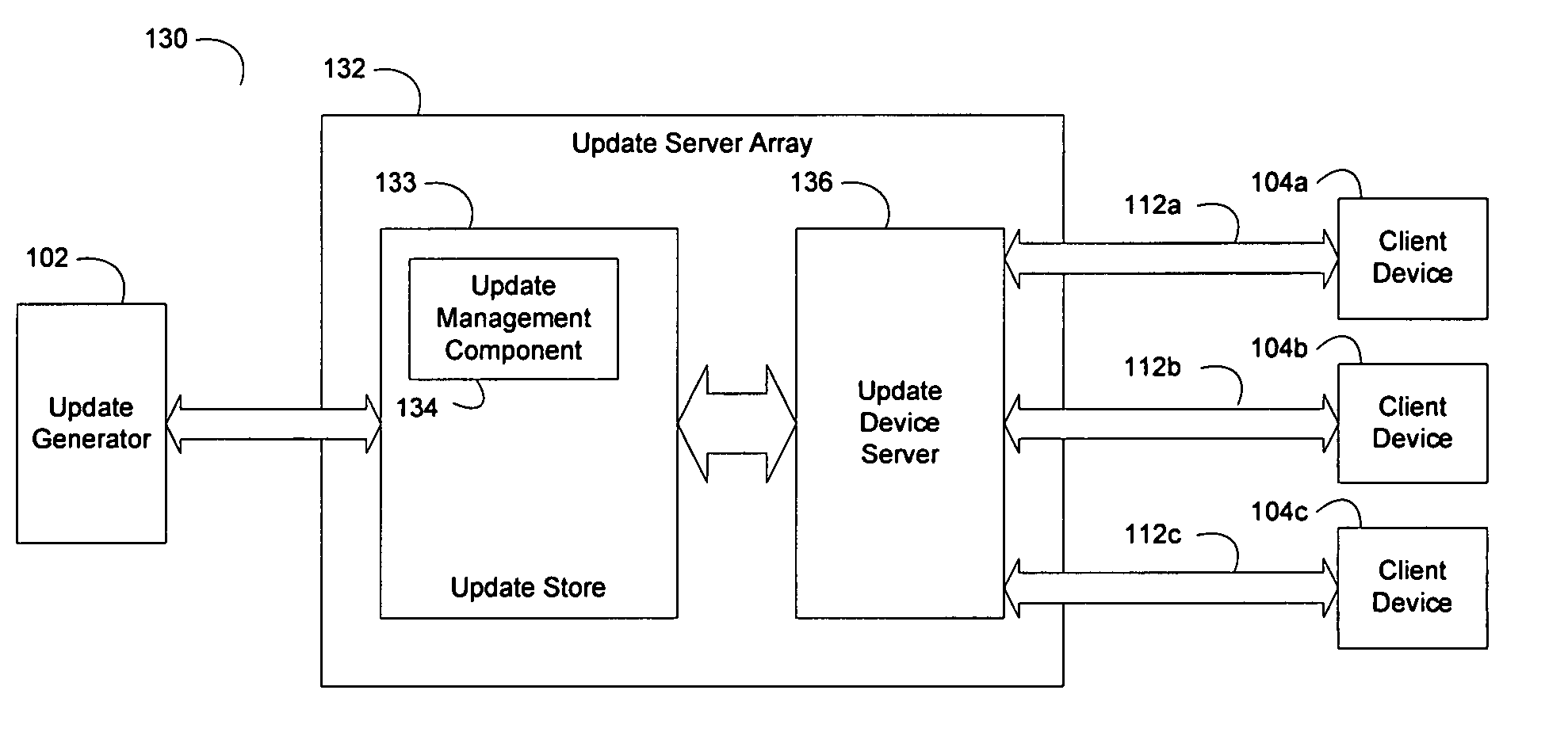With the rapid and continuous advancement of software and hardware technology, maintenance of existing devices and software components presents an ever-increasing challenge.
Routine installation of information updates and patches has become a recognized necessity to insure that computers, devices, and software applications are kept fully functional over their operational lifetimes. Unfortunately, for many devices and applications, update management can be a cumbersome,
time consuming, and error prone process.
These problems are often exacerbated in portable electronic devices such as cellular phones and personal digital assistants due to memory constraints and bandwidth restrictions.
Furthermore, portable electronic devices often lack the ability to perform automated update operations in a convenient and reliable manner.
During the update process, problems often arise when the update is improperly performed or interrupted and may result in
data corruption, loss of program functionality, or hardware failure.
This presents developers and consumers alike with significant obstacles to insure that available updates are installed in a timely and effective manner.
Additionally, developers must dedicate a substantial amount of time and resources to insure their users are provided with necessary updates, patches, and new versions of existing software and / or hardware components.
A further problem exists where a high degree of requisite of skill is needed to acquire and install an available update and may involve
technical skills beyond that of the average customer.
Even if a customer is able to retrieve the update, he is faced with the problem of insuring its proper installation.
Improper installation of an update
package may result in
software failure or render the device to which the update is applied inoperative and place a further burden on the developer in resolving customer-related update problems.
Although the importance of a superior updating
system is apparent, conventional updating solutions typically suffer from a number of drawbacks.
These problems are particularly prevalent in portable
electronics devices and arise from a number of factors related to creation, distribution, and installation of the update
package.
For example, electronic devices such as cellular phones are often limited with respect to the available memory or storage space available for update
processing.
The size of the update
package must be kept to a minimum in order to accommodate the reduced availability of resources on these devices and, as a result, the ability to perform significant alterations or modifications of the embedded code in these devices may be limited.
This is inconvenient for the user and may not be practical when the number of devices to be updated is large.
In devices that support
wireless acquisition and installation of update packages, problems are frequently encountered due to bandwidth limitations needed to distribute available update packages.
Furthermore, acquisition of the update package by
wireless methods may take long periods of time and be subject to interruption or
data corruption.
Even when the update package has been acquired, the installation of the update often requires significant technical expertise at the user end complicating the proper installation of the update package.
During this time the user may be faced with problems associated with uninstalling a previous version of the code to be updated or applying the update in manner that will be successful.
This can present a further problem as it discourages the user from performing update operations for long periods of time or in some cases altogether.
A further problem exists with update management systems that rely on publicly accessible servers to provide updates to large number of users.
These servers often become busy or crowded and reduce the efficiency by which the update can be acquired.
Additional complexities resulting from update requirements arise from shortened product version lifecycles.
This places increased demands on developer resources required to maintain the update services and results in developers expending added resources for existing
software maintenance potentially shifting their focus from developing new product capabilities to supporting and updating older versions.
From a business perspective software updating is generally recognized as a non-revenue producing activity and may consume an inordinate percentage of developer resources.
A number of problems are associated with these solutions which are typically expensive, proprietary, and platform-specific.
Both of these methods have inherent problems with flexibility and
file size.
Commercially available software updaters can be expensive and typically create updates which have unnecessarily large file sizes.
Because of the problems associated with large update file sizes, developers may be hesitant to release frequent patches and as a result, pursue longer
software development cycles.
This may be a disservice to the customer due to the limited number of updates, which may be released only when there are substantial enough changes and / or improvements to warrant the creation and
disbursement of large update files.
 Login to View More
Login to View More  Login to View More
Login to View More 


